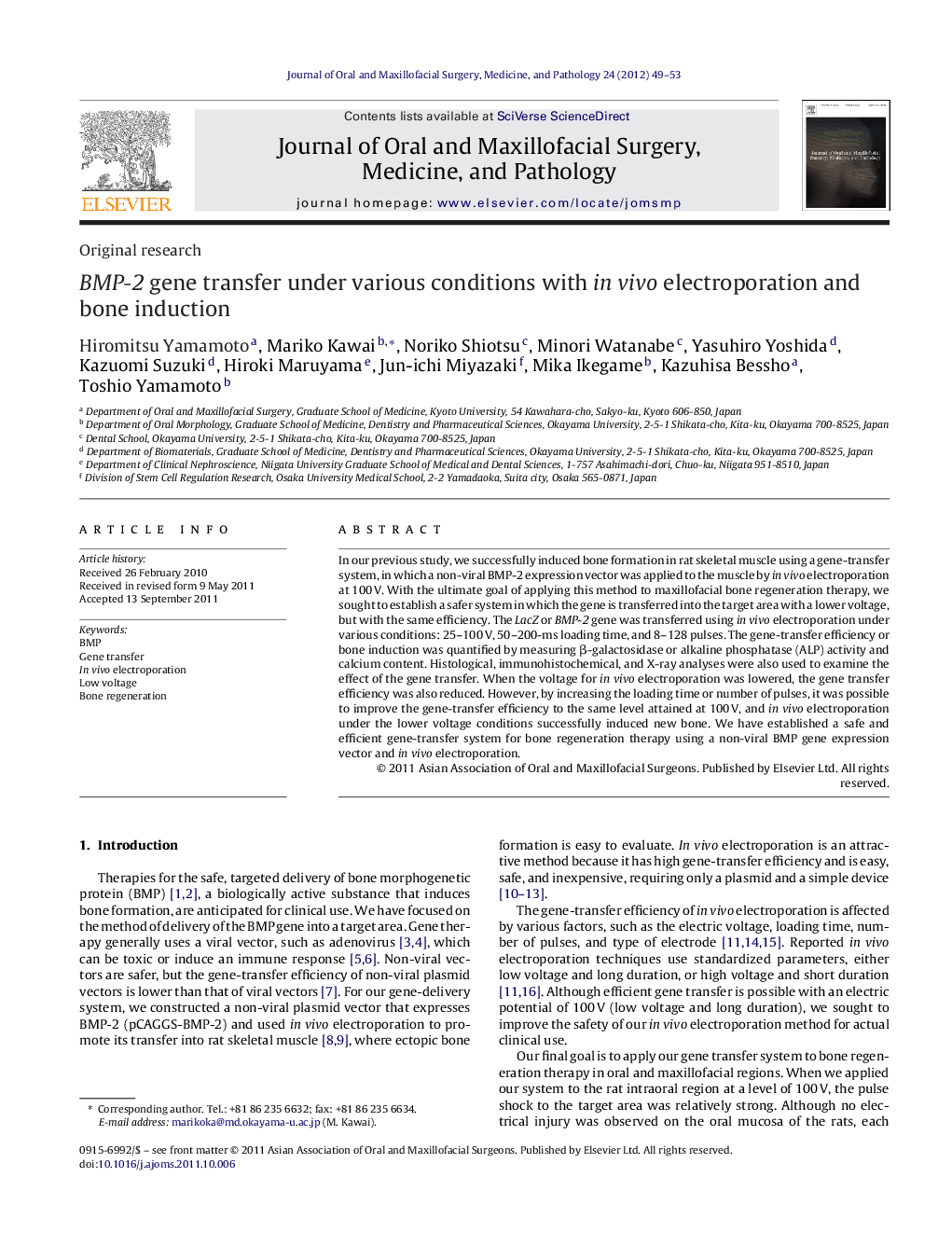| Article ID | Journal | Published Year | Pages | File Type |
|---|---|---|---|---|
| 3159988 | Journal of Oral and Maxillofacial Surgery, Medicine, and Pathology | 2012 | 5 Pages |
In our previous study, we successfully induced bone formation in rat skeletal muscle using a gene-transfer system, in which a non-viral BMP-2 expression vector was applied to the muscle by in vivo electroporation at 100 V. With the ultimate goal of applying this method to maxillofacial bone regeneration therapy, we sought to establish a safer system in which the gene is transferred into the target area with a lower voltage, but with the same efficiency. The LacZ or BMP-2 gene was transferred using in vivo electroporation under various conditions: 25–100 V, 50–200-ms loading time, and 8–128 pulses. The gene-transfer efficiency or bone induction was quantified by measuring β-galactosidase or alkaline phosphatase (ALP) activity and calcium content. Histological, immunohistochemical, and X-ray analyses were also used to examine the effect of the gene transfer. When the voltage for in vivo electroporation was lowered, the gene transfer efficiency was also reduced. However, by increasing the loading time or number of pulses, it was possible to improve the gene-transfer efficiency to the same level attained at 100 V, and in vivo electroporation under the lower voltage conditions successfully induced new bone. We have established a safe and efficient gene-transfer system for bone regeneration therapy using a non-viral BMP gene expression vector and in vivo electroporation.
